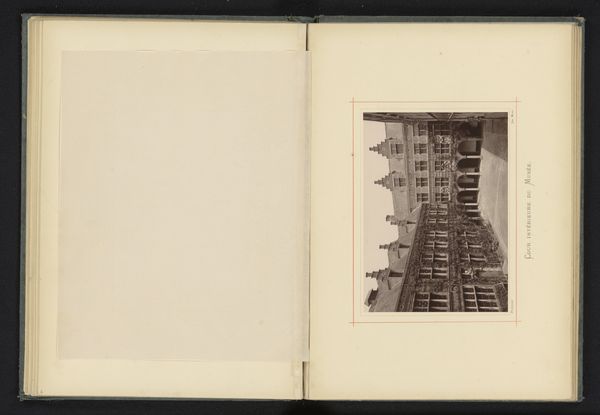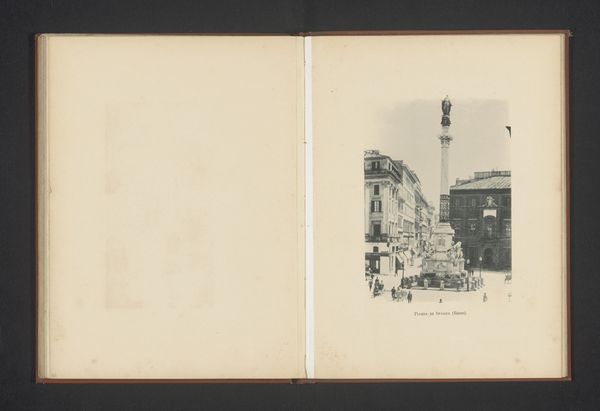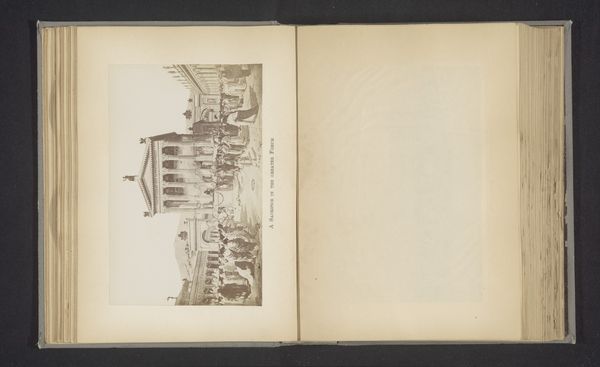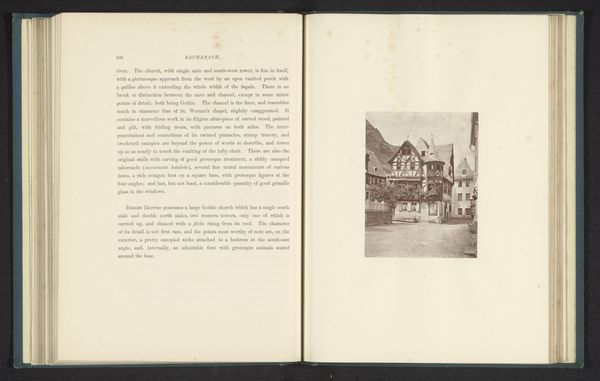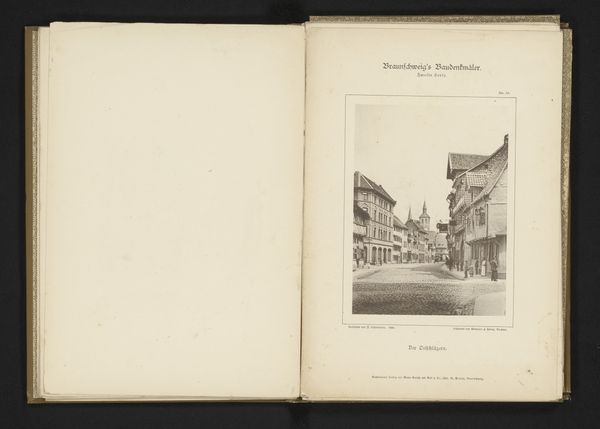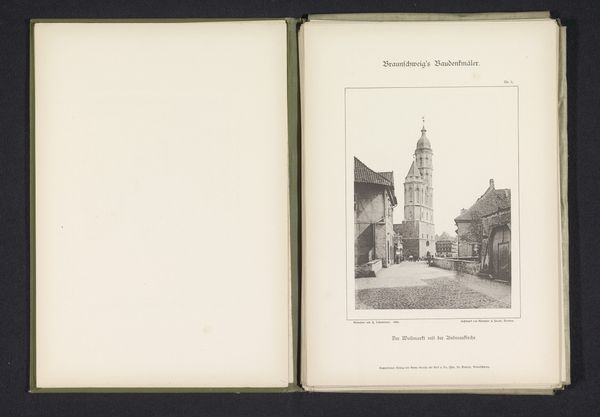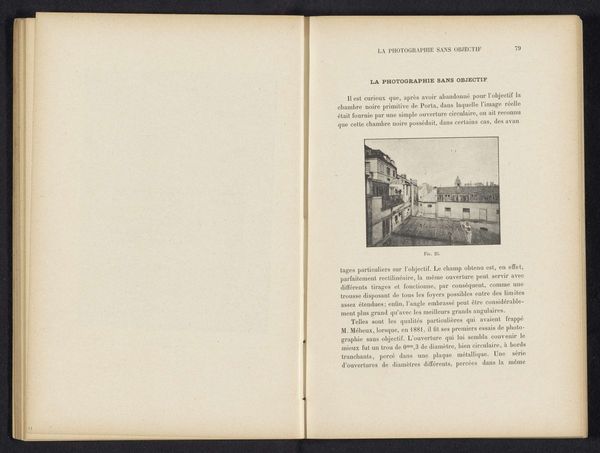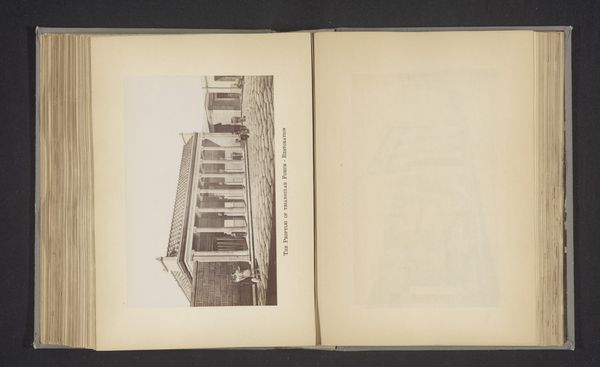
#
aged paper
#
homemade paper
#
light coloured
#
personal journal design
#
personal sketchbook
#
folded paper
#
thick font
#
paper medium
#
historical font
#
columned text
Dimensions: height 105 mm, width 165 mm
Copyright: Rijks Museum: Open Domain
Curator: This intriguing image, "Gezicht op de Notre-Dame de Québec," likely predates 1894 and is attributed to Jules-Ernest Livernois. It's presented as part of a sketchbook or journal, complete with annotations below the photograph itself. Editor: My first impression is one of balanced austerity. The stark contrast of light and shadow emphasizes the geometry of the Notre-Dame, presenting it almost as an architectural diagram within the frame. Curator: Precisely. Livernois has structured the photograph with a keen eye for composition. The cathedral dominates, yet the surrounding urban space provides context, establishing a visual relationship between the sacred and the everyday. Notice how the horizontal lines of the buildings lead the eye toward the central focus. Editor: Beyond architectural design, there is cultural weight. Cathedrals have historically stood as emblems of stability, order, and devotion, visually proclaiming dominant ideologies within a landscape, both literally and figuratively shaping their social and spiritual sphere. What readings are suggested by Livernois? Curator: Semiotically, the building is not merely a cathedral. The symmetrical facade speaks to ideas of order and divinity, echoed in the clean lines and measured proportions, with emphasis on clarity. The spire aims vertically. But one might interpret the horse carriages as the changing, secular and perhaps increasingly commercial times in the streets of Québec. Editor: The aged quality of the print enhances its symbolic resonance. Knowing this image precedes 1894 frames our viewing. I would wager it taps into our collective memories of a past era, prompting reflection on permanence and transition. Is there perhaps a bittersweet quality? The building looms large but human traffic goes about their routines unaware of that scale and visual permanence. Curator: The visual elements definitely activate a deeper, even if somewhat ambivalent, response, speaking not just of a building, but of enduring structure. And consider, too, how it prompts us to study and decipher how visual vocabularies convey historical meaning and intent. Editor: This photograph does exactly that, reflecting Livernois’ conscious choice in depicting Québec’s shifting cultural identities at the time. I can sense the passage of time weighing heavily in both its iconography and composition.
Comments
No comments
Be the first to comment and join the conversation on the ultimate creative platform.
